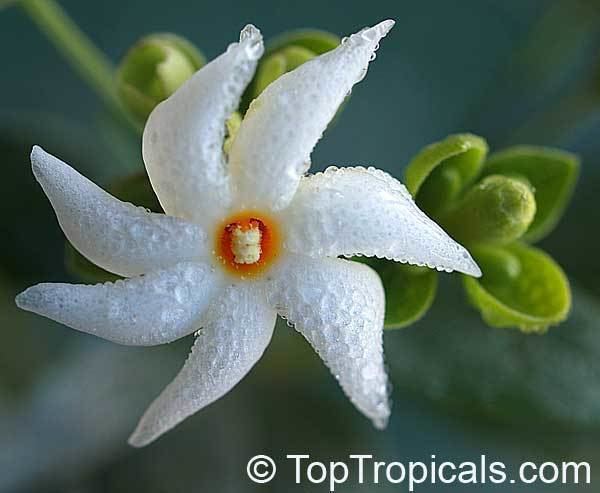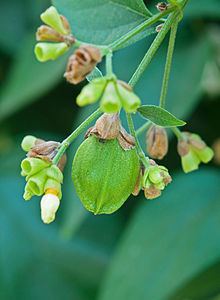Kingdom Plantae Family Oleaceae Scientific name Nyctanthes arbor-tristis Rank Species | Order Lamiales Genus Nyctanthes Higher classification Nyctanthes | |
 | ||
Similar Nyctanthes, Night‑blooming jasmine, Sacred Tree, Bauhinia acuminata, Phanera purpurea | ||
Harsringar nyctanthes arbor tristis supplier exporter flowers oil seeds
Nyctanthes arbor-tristis (Night-flowering Jasmine) is a species of Nyctanthes, native to South Asia and Southeast Asia.
Contents
- Harsringar nyctanthes arbor tristis supplier exporter flowers oil seeds
- Names and symbolism
- In Hinduism
- Pharmacology
- Chemical constituents
- Biological activity
- References
Nyctanthes arbor-tristis is a shrub or a small tree growing to 10 m tall, with flaky grey bark. The leaves are opposite, simple, 6–12 cm long and 2–6.5 cm broad, with an entire margin. The flowers are fragrant, with a five- to eight-lobed white corolla with an orange-red centre; they are produced in clusters of two to seven together, with individual flowers opening at dusk and finishing at dawn. The fruit is a flat brown heart-shaped to round capsule 2 cm diameter, with two sections each containing a single seed.

Names and symbolism

The tree is sometimes called the "tree of sorrow", because the flowers lose their brightness during daytime; the scientific name arbor-tristis also means "sad tree". The flowers can be used as a source of yellow dye for clothing. The flower is the official flower of the state of West Bengal, India, and for Kanchanaburi Province, Thailand. Nyctanthes arbor-tristis (sometimes incorrectly cited as Nyctanthes arbortristis or Nyctanthes arbor tristis) is commonly known as:
In Hinduism

Parijat (Nyctanthes arbor-tristis), appears in several Hindu religious stories and is often related to the Kalpavriksha. In one story, which appears in Bhagavata Purana, the Mahabharata and the Vishnu Purana, parijat appeared as the result of the Samudra manthan (Churning of the Milky Ocean) and Lord Krishna battled with Indra to win parijat. Further on, his wife Satyabhama demanded the tree be planted in the backyard of her palace. It so happened that in spite of having the tree in her backyard, the flowers used to fall in the adjacent backyard of the other queen Rukmini, who was favourite of Lord Krishna, because of her superior devotion and humility.
Pharmacology

Extracts of the seeds, flowers and leaves possesses immunostimulant, hepatoprotective, antileishmanial, antiviral and antifungal activities in vitro. The leaves have been used in Ayurvedic medicine and Homoeopathy for sciatica, arthritis, fevers, and as a laxative.
Chemical constituents

